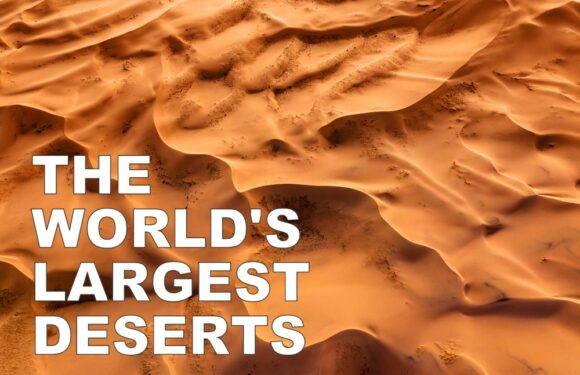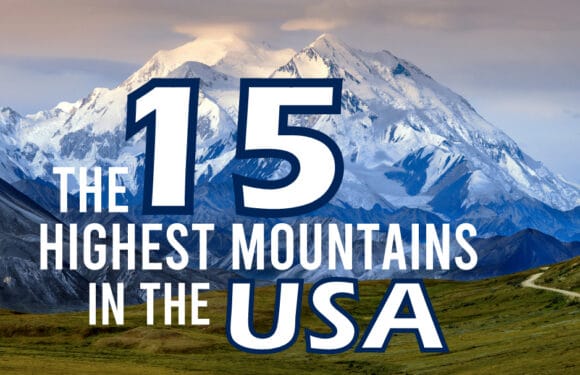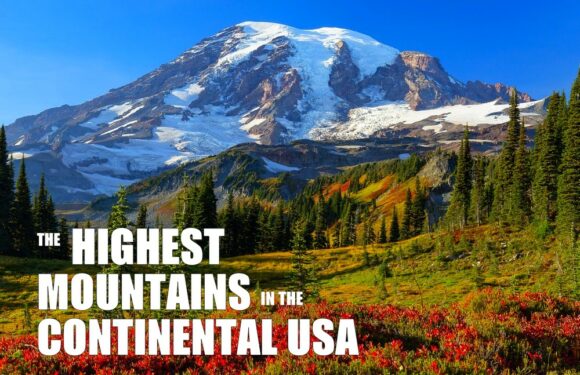
Africa is home to several impressive mountain ranges, including the rugged beauty of the Atlas Mountains and the snow capped peaks of the Rwenzori. Interestingly, Africa’s highest peak, Mount Kilimanjaro, is not part of a range, but a volcano, making it the tallest freestanding mountain in the world.
Let’s take a look at the major mountain ranges of Africa.
Major Mountain Ranges of Africa
Atlas Mountains
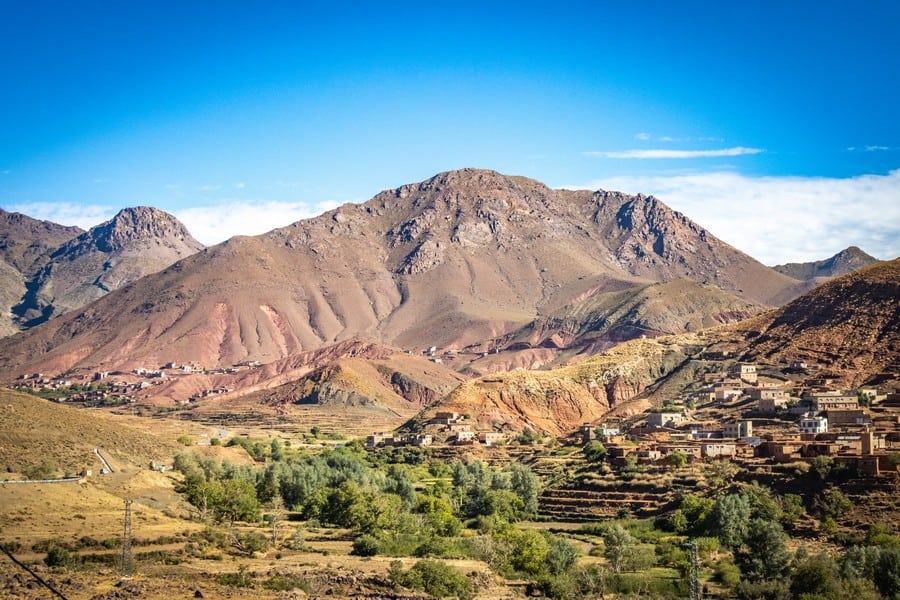
Stretching across North Africa through Morocco, Algeria, and Tunisia, the Atlas Mountains form a dramatic backdrop to the region’s cultural heritage and scenic beauty. Jebel Toubkal, the highest peak in the range at 13,671 feet (4,167 meters), entices hikers to explore its rugged trails, picturesque valleys, and traditional Berber villages.
This mountain range provides a physical barrier between the Mediterranean and the Sahara. It also serves as a cultural divide. Ancient trade routes linked the historically rich cities of the Maghreb with the vast Saharan hinterland. These mountains also influence the local climate, creating fertile, green valleys that contrast sharply with the arid surroundings.
Drakensberg Mountains
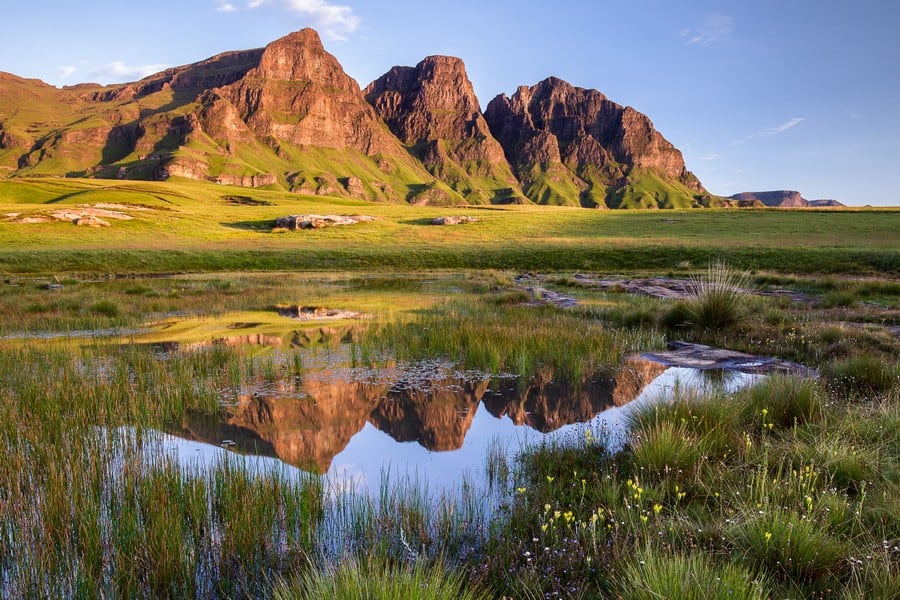
South Africa’s Drakensberg, meaning “Dragon Mountains,” is a UNESCO World Heritage Site. These formidable mountains span across the provinces of KwaZulu-Natal and the Eastern Cape. The jagged peaks and rolling grasslands offer breathtaking landscapes, iconic rock formations, and remarkable biodiversity, including ancient San rock art.
The area is also known for its spectacular waterfalls, clear streams, and the high-altitude grasslands known locally as ‘veld’. The Drakensberg is important for the South African water supply. Its catchments feed into major rivers like the Tugela and the Orange.
Simien Mountains
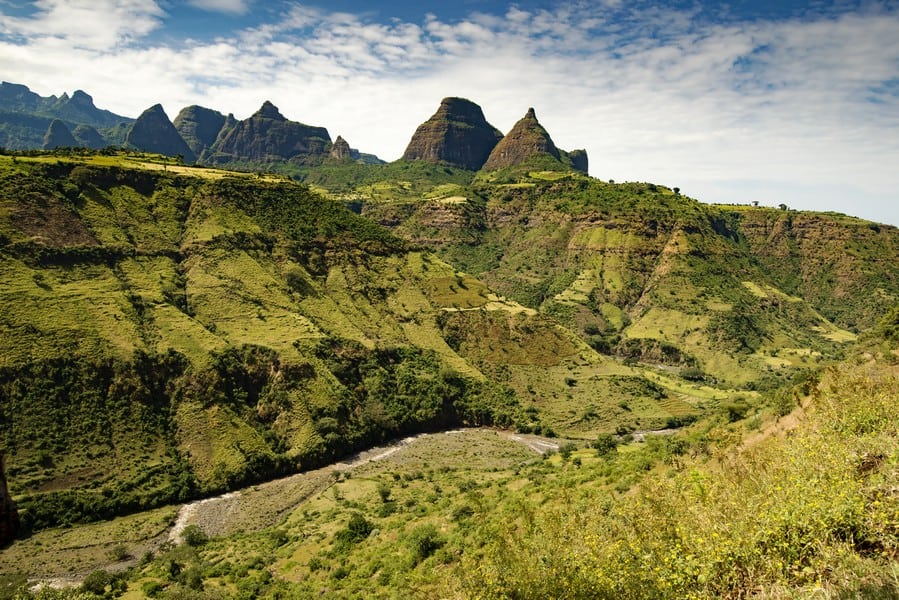
Located in northern Ethiopia, the Simien Mountains enthrall adventurers with their dramatic escarpments, deep valleys, and endemic wildlife, such as the Gelada baboons and Ethiopian wolves. Ras Dashen, Ethiopia’s highest peak at 14,928 feet (4,550 meters), provides stunning panoramic views.
The mountains’ geological formations, consisting of volcanic rocks that have eroded over millennia, create a dramatic visual impact.
Rwenzori Mountains
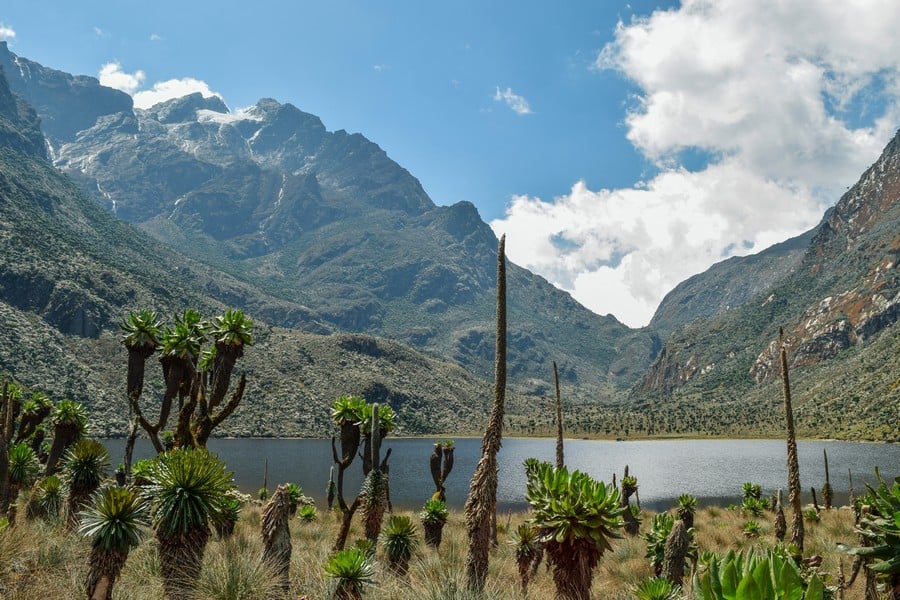
Straddling the border between Uganda and the Democratic Republic of the Congo, the Rwenzori Mountains, often called the “Mountains of the Moon,” boast Africa’s third-highest peak, Margherita Peak, at 16,763 feet (5,109 meters). Renowned for its glacier-capped summits, these mystical mountains conceal diverse ecosystems, including rainforests, alpine meadows, and unique flora and fauna.
The Rwenzoris are particularly noted for their botanic diversity, including several endemic plant species such as the giant lobelias and groundsel, which are adapted to the high-altitude conditions. The challenging terrain offers some of the best mountaineering in Africa.
Virunga Mountains

The Virunga Mountains are a chain of volcanoes in East Africa, stretch across Rwanda, Uganda, and the Democratic Republic of Congo. Part of the Albertine Rift, the Virungas are home to the critically endangered mountain gorilla, which has become a symbol of conservation efforts in the region.
The range includes eight major volcanoes, most of which are dormant, with the exception of Mount Nyiragongo and Mount Nyamuragira in the DRC, which are among the most active volcanoes in the world. The high-altitude forests that cloak these mountains are biodiversity hotspots, supporting a myriad of species besides the mountain gorilla, including the golden monkey, numerous bird species, and rich montane flora.
Ahaggar Mountains
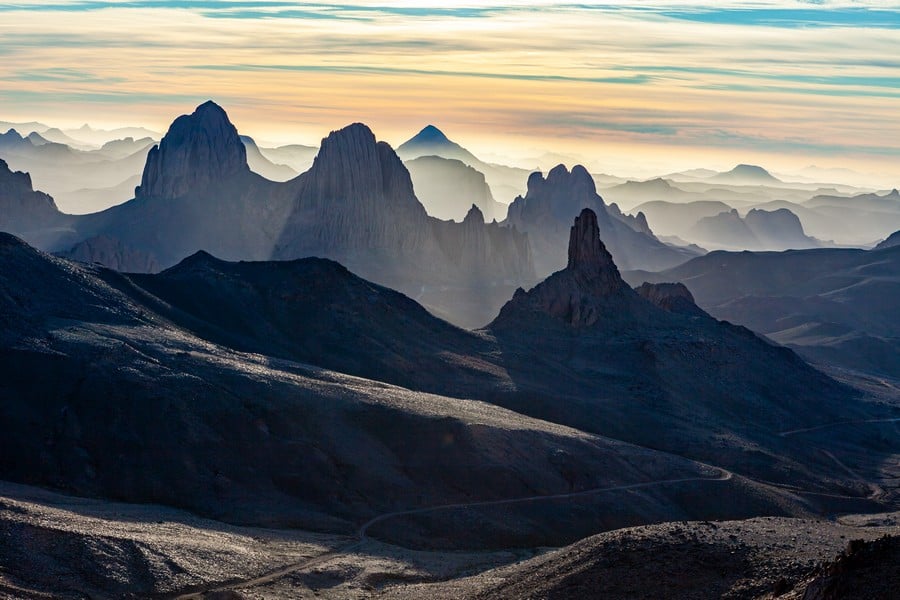
Nestled in southern Algeria, the Ahaggar Mountains, also known as the Hoggar, boast an otherworldly terrain of spectacular peaks, vast plateaus, and surreal landscapes. Mount Tahat, the highest peak, rises to approximately 9,573 feet (2,918 meters).
The Ahaggar Mountains are primarily composed of volcanic rock. The landscape features various extinct volcanoes, with the last eruptions occurring roughly in the Neogene period. The harsh, lunar-like environment of this region is marked by extreme temperatures and sparse vegetation. The mountains are traditionally inhabited by the Tuareg people, a nomadic Berber group known for their distinct blue attire and silver jewelry.



















































